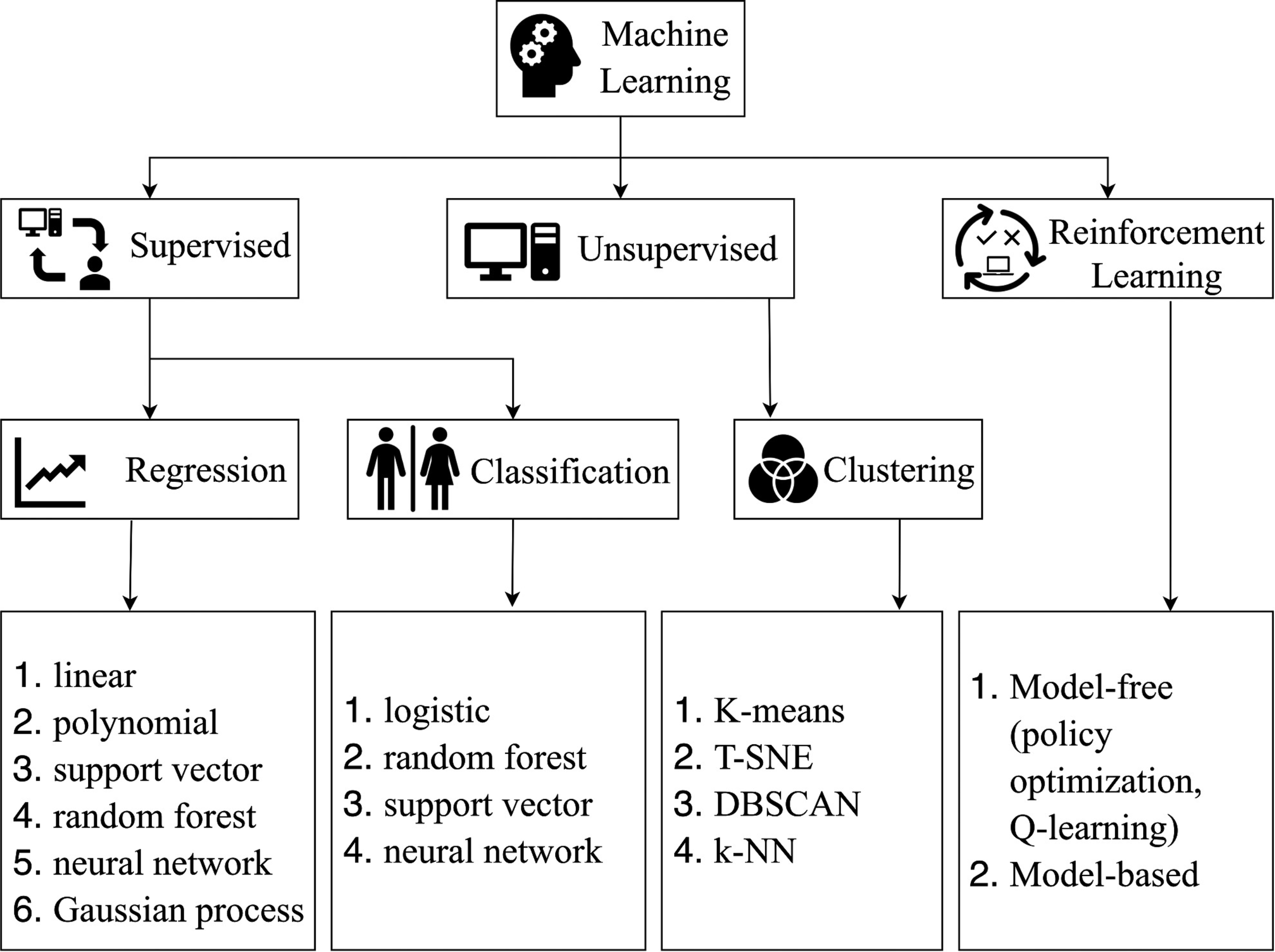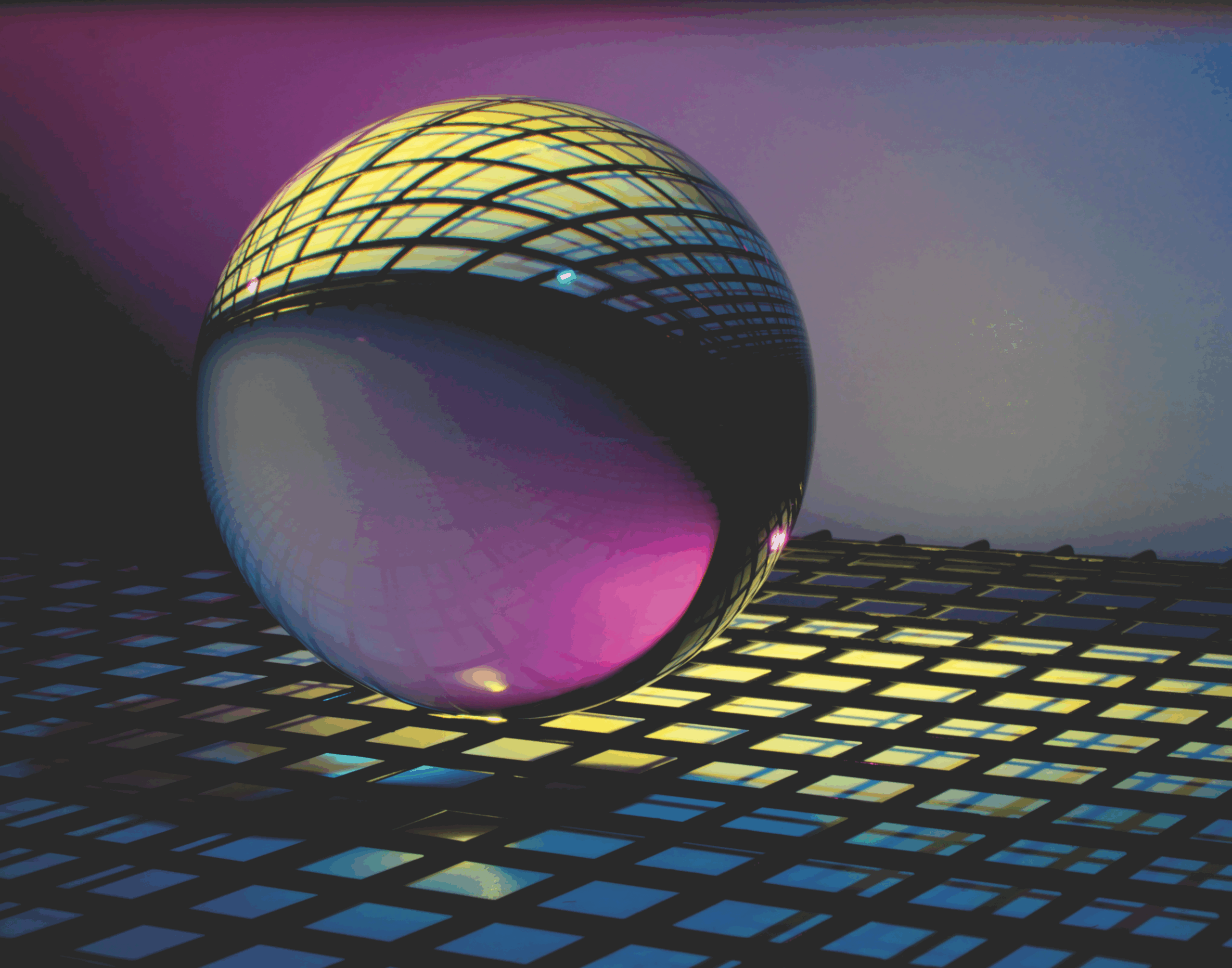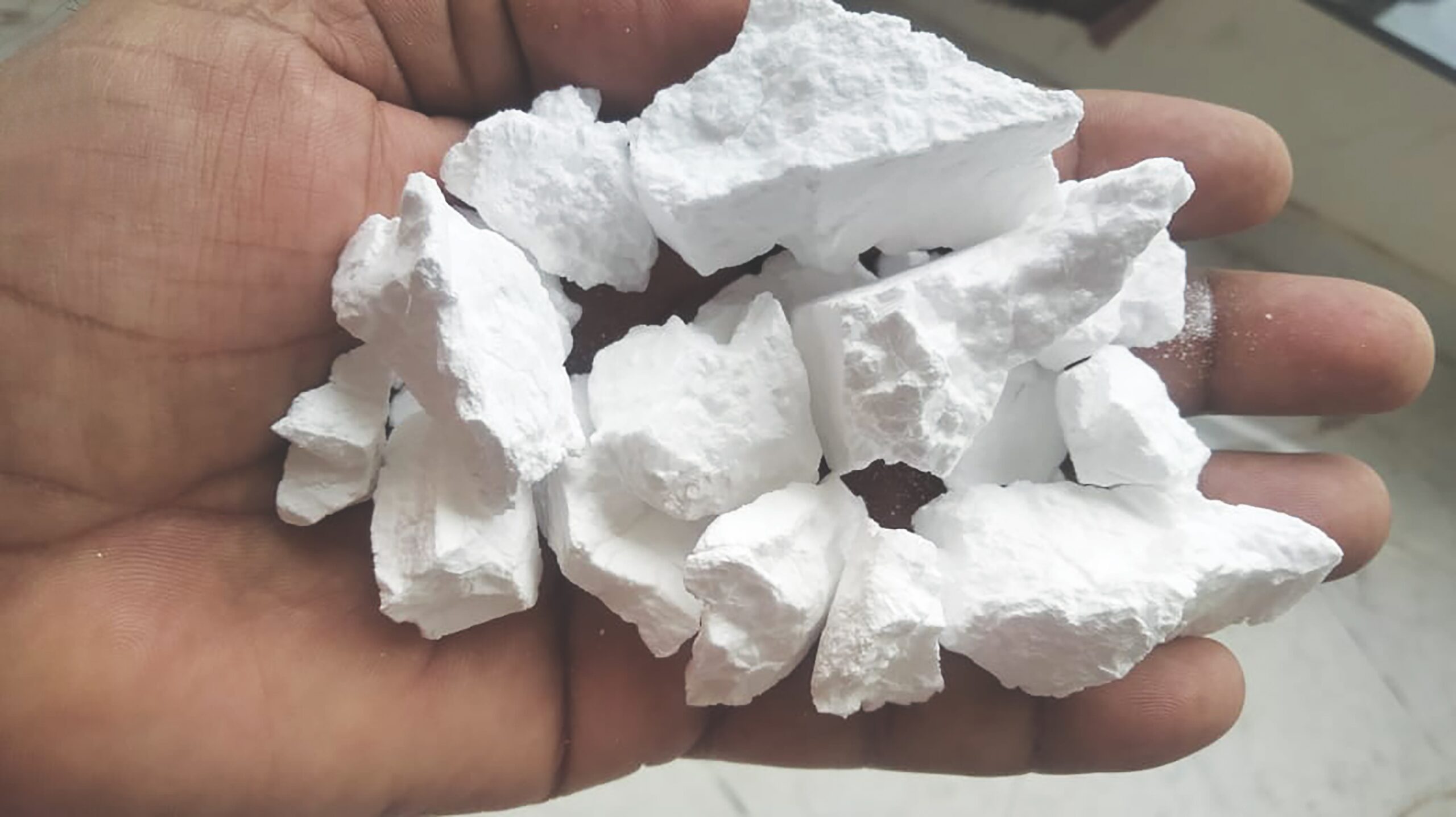In the past 30 years, significant and sustained development has advanced artificial intelligence to a point that it is beginning to demonstrate its potential in research and industry.
Artificial intelligence is the ability of a computer to mimic human cognitive functions, such as problem solving or decision making. Machine learning, a subset of AI, is the application of artificial intelligence to address a specific problem without direct instructions from the programmer.
AI and ML offer a completely different paradigm for designing new processes and materials compared to traditional programming. Before, a researcher needed to explicitly develop a series of fixed instructions to achieve a given task. Now, researchers “train” the computer program with a set of data, and it will evolve the algorithm to perform the task.
Glass researchers are particularly interested in harnessing AI and ML for materials development. With nearly the entire periodic table to select from, vast possibilities exist for potential glass compositions. AI and ML can identify the most promising compositions much more quickly than traditional lab-based trial-and-error experiments.
John C. Mauro and Mathieu Bauchy are two researchers exploring the use of AI and ML in glass research. Mauro is professor of materials science & engineering and associate head for graduate education at The Pennsylvania State University. Bauchy is associate professor of civil and environmental engineering at the University of California, Los Angeles. In an interview with ACerS Bulletin editor Eileen De Guire, they discuss the current progress in harnessing AI and ML to design new glasses and how these techniques may develop in the future.
Q. What methods are currently used for modeling new glasses, and what benefits do AI and ML offer over these traditional techniques?
[JCM]: Physics-based models are the preferred option whenever possible, because they are more likely to give accurate extrapolations to new composition spaces and can also provide helpful new physical insights. However, for many properties or glass compositional families, physical models may be too difficult to derive. Hence, there is a need for data-driven modeling approaches. Many glasses exhibit nonlinear composition–property relationships, which can be difficult to capture with simple regression models. Machine learning gives the opportunity to capture these complicated nonlinear relationships to aid in the design of new glass compositions.
[MB]: These are all good points. I would add that traditional models are often limited by our own experience, knowledge, and intuition. Because computers are not limited by any biases, the hope is that, by unveiling some previously hidden patterns in datasets, machine learning models could lead to discovery of new types of glasses that were previously thought to be impossible, for example, “unbreakable” glasses.
Q. What types of AI and ML techniques are most useful for predicting glass compositions?
[JCM]: It depends on the problem under study. So far, I would say that neural networks are the most commonly used approach for developing machine learning-based models for glass composition–property relationships.
[MB]: Agreed; artificial neural networks tend to be the method of choice because they are flexible enough to offer a one-size-fits-all solution to many types of problems. However, neural networks can often be outperformed by gradient-boosted decision tree models—but these models are challenging to tune. One should also keep in mind that many problems do not require complex neural networks and can actually more effectively be solved with simple linear or polynomial regression methods.
Q. Are there barriers or limitations to using these techniques?
[JCM]: The biggest barrier is the availability of a sufficient quantity of high-quality data for use in training the machine learning models. Glass melting and characterization is a time-consuming and expensive process, which limits the amount of data that can be obtained to build the models. This limitation becomes even greater for many-component systems because each new component added to the glass increases the dimensionality of the problem by one. Hence, we almost always must deal with the problem of sparse data, especially for many-component glass systems.
[MB]: I would also add that, in practice, developing a machine learning algorithm to accelerate the discovery of new glasses requires a combined expertise in glass and computer science. This requirement is a challenge because traditional siloed education programs rarely expose materials science students to artificial intelligence, or computer science students to materials research. There is a need to develop new programs that train multidimensional engineers who are well versed in materials and computer science.
Q. Are these AI and ML techniques limited to designing new compositions, or can they be used, for example, to develop new manufacturing processes? Which area offers the greater gains from an industrial perspective?
[JCM]: Machine learning can also be used for process optimization, market forecasting, and even human resource management. Anytime there is a large amount of data available, machine learning can be used to find correlations between a set of input conditions and output results. The main limitation for machine learning is that it cannot be used to discover something totally new, i.e., something completely outside the domain of data used to construct the model. Within the realm of process engineering, machine learning can be used to help optimize current processes, but it cannot be used to develop a completely new process. The human mind is still vastly superior to artificial intelligence for anything that involves creative “outside-the-box” thinking. Machine learning is, by its very nature, a form of “inside-the-box” thinking.
[MB]: Agreed. Machine learning is not limited to the discovery of new glasses. In fact, there is much promise in the emerging concept of “digital twin” in manufacturing (or digital replica). The idea is that, with sufficient data, one can develop a surrogate model that virtually replicates real-world components in a manufacturing process. This model makes it possible to test the effect of certain process adjustments within the digital twin, which allows researchers to predict how the real-life manufacturing process would be affected by such changes, without the need to actually deploy these adjustments. This approach has the potential to dramatically accelerate the optimization of manufacturing processes, which typically relies on time-consuming trial-and-error experiments.
Q. Have glass scientists mainly adapted AI and ML techniques in other fields for their own purposes, or are there novel techniques developed specifically for glass science?
[JCM]: Thus far, glass scientists have mainly applied already existing machine learning methods to our specific problems, rather than developing entirely new AI-based approaches.
[MB]: Agreed, but I think that, going forward, new techniques that are tailored to materials will need to be developed. Most of the state-of-the-art deep learning methods are designed to handle very large datasets comprising millions of datapoints and do not necessarily perform well on sparse materials datasets comprising only a few hundreds of datapoints. Present machine learning approaches are often not tailored to materials, for example, in terms of structure representation, limited number of datapoints, importance of uncertainty quantification, focus on inverse design. There are also many opportunities to develop physics- or chemistry-informed machine learning models that simultaneously leverage data and knowledge.

Basic machine learning paradigm Machine learning approaches are broadly classified into three types: supervised, unsupervised, and reinforcement learning. Supervised learning involves an algorithm that “learns” a function that maps input information to an output using “training” data. Unsupervised learning seeks to uncover hidden, unlabeled patterns in data. Because the algorithm does not map onto an output, the approach is “unsupervised.” Reinforced learning is more useful in systems applications, such as robotics or high-throughput laboratory techniques, and is not used much for glass or materials science applications.1 The four boxes across the bottom list the algorithms that execute the machine learning functions. Credit: Venugopal et al., IJAGS
Q. Are there any commercial products that were developed using AI and ML techniques?
[JCM]: Yes, absolutely. But machine learning is never used on its own. Machine learning is one tool in a larger toolbox that can help us with the design of new glass compositions. Machine learning can be used most effectively when it is combined with experimental insights and physics-based models. This combined approach provides a highly effective and efficient means for designing new glass compositions, including commercial products. Ultimately, the model-predicted glass compositions still need to be reduced to practice in experiments.
[MB]: Although glass manufacturing companies rarely advertise the details of their internal research and development processes when launching new products, there are definitely some success stories where machine learning enabled the design of new commercial materials. For instance, the Concrete-AI platform (http://www.concrete-ai.com) led to the development of new ready-mix concrete commercial formulations featuring a decrease in cost and carbon footprint of 10% and 50%, respectively, as compared to previously used formulations, while achieving similar performance.
Q. What is the most pressing need to advance the use of AI and ML techniques to the next level for the R&D of commercially important glasses?
[JCM]: We need greater community organization around data management, especially having a common database where everyone can contribute data and freely access the full archive of data for modeling purposes.
[MB]: Agreed; the lack of curated datasets that are accessible, complete, self-consistent, and well populated is clearly the main bottleneck at this point. Q. Are there resources, such as databases, designed for glass that AI and ML researchers can use or contribute to?
[JCM]: GlassPy is an open source Python database created by Daniel Cassar. GlassPy is available at https://github.com/drcassar/glasspy. PyGGi is a commercial Python code by Anoop Krishnan for performing machine learning modeling of glass composition–property relationships. PyGGi is available at https://pyggi.iitd.ac.in/about.
Q. As more materials scientists use AI and ML techniques to advance their respective fields, does that translate into the courses taught to materials science students? For example, are more computer science courses being required or are universities developing courses that specifically focus on computational methods for materials science?
[JCM]: Computational materials science courses are now being taught as electives at the undergraduate and graduate levels. These courses cover a wide range of computational approaches but do not focus exclusively on machine learning. Students can also take elective courses specific to machine learning, e.g., from computer science or data science departments. There is also a trend of incorporating more computation into core materials science courses so that students can develop some elementary programming and modeling skills as a core part of the curriculum.
[MB]: Such transversal courses are very needed and typically appreciated by students. For anybody who would be interested in learning more, I developed a course on artificial intelligence and machine learning for engineers at UCLA. All lecture videos are freely available online at https://bit.ly/3Lq4pre. I also offer a short course through ACerS (https://ceramics.org/ML-for-glass-science), which is a great introduction to the topic, especially for graduate students at the beginning of their programs.
Q. What other fields or disciplines would be able to collaborate with glass researchers to advance the art of computational glass science?
[JCM]: When it comes to computational glass science, we have a lot of common interests with several other disciplines, including physics, chemistry, chemical engineering, and nuclear engineering. There is also a lot of value in collaborating with computer scientists, who can offer advances to the computational techniques themselves.
[MB]: Yes, I think there is a lot of value in collaborating with computer scientists, who may not be familiar with the unique challenges associated with the application of machine learning to material-related problems.
Q. What excites you about the future of AI and ML applied to glass?
[JCM]: As someone with a dual background in glass science and computer science, it excites me to see how effectively these two fields have come together to offer powerful solutions for problems of technological interest. An exciting next step will be the application of these approaches to the design of glass-ceramics, including use of convolutional neural networks to analyze microstructural image data and link that data to mechanical and optical properties.
[MB]: What excites me the most is the opportunity offered by the integration of theory, numerical simulations, and machine learning, wherein all the approaches learn, inform, and advance each other. There are also a lot of exciting developments in robotics and “self-driving” laboratories where new materials could be discovered in a high-throughput fashion without any human intervention.
Cite this article
E. De Guire, “Harnessing artificial intelligence and machine learning to design new glasses,” Am. Ceram. Soc. Bull. 2022, 101(4): 18–21.
Issue
Category
- Glass and optical materials
- Manufacturing
Article References
1 Venugopal V, Bishnoi S, Singh S, Zaki M, Grover HS, Bauchy M, Agarwal M, Krishnan NA, “Artificial intelligence and machine learning in glass science and technology: 21 challenges for the 21st century.” International Journal of Applied Glass Science, 2021 Jul;12(3):277–92.
Further reading
- Cassar DR, Santos GG, Zanotto ED, “Designing optical glasses by machine learning coupled with a genetic algorithm.” Ceramics International, 2021 Apr 15;47(8):10555–64.
- De Guire E et al., “Data–driven glass/ceramic science research: Insights from the glass and ceramic and data science/informatics communities.” Journal of the American Ceramic Society, 2019 Nov;102(11):6385–406.
- Gubernatis JE, Lookman T, “Machine learning in materials design and discovery: examples from the present and suggestions for the future.” Phys Rev Mater., 2018;2(12):120301.
- Liu H, Fu Z, Yang K, Xu X, Bauchy M, “Machine learning for glass science and engineering: A review.” Journal of Non-Crystalline Solids: X, 2019 Dec 1;4:100036.
- Mauro JC, “Decoding the glass genome.” Current Opinion in Solid State and Materials Science, 2018 Apr 1;22(2):58–64.
- Mauro JC, Tandia A, Vargheese KD, Mauro YZ, Smedskjaer MM, “Accelerating the design of functional glasses through modeling.” Chemistry of Materials, 2016 Jun 28;28(12):4267–77.
- Montazerian M, Zanotto ED, Mauro JC, “Model-driven design of bioactive glasses: from molecular dynamics through machine learning.” Int Mater Rev., 2019;1–25. n
Related Articles
Bulletin Features
Sintered synthetic cristobalite: Innovative kiln-based thermal transformation of quartz
Cristobalite, a high-temperature polymorph of silica, is widely used in ceramics, glass, paints, refractories, and dental materials due to its low density, high whiteness, thermal expansion behavior, and mechanical stability. Traditional cristobalite production methods rely on static sintering of finely ground quartz at high temperatures (~1,750°C) for extended durations (2–3…
Market Insights
Bioactive glass continues to transform medical care decades after first hitting the market
Almost 60 years ago, a chance meeting led to pioneering work that has improved medical care and seeded future innovations. In the late 1960s, a young professor named Larry Hench traveled to a conference in Sagamore, N.Y., where he happened to sit next to a U.S. Army colonel who was…
Market Insights
Sustainable development and design: Inspiration from landscape-shaping creatures
Animals are not just passive inhabitants of their environment. Many are architects of the natural world, actively shaping landforms and water bodies as they move around, feed, build homes, and reproduce. This impact by animals on different biomes has traditionally been overlooked in the environmental sciences. But scientists and engineers…




